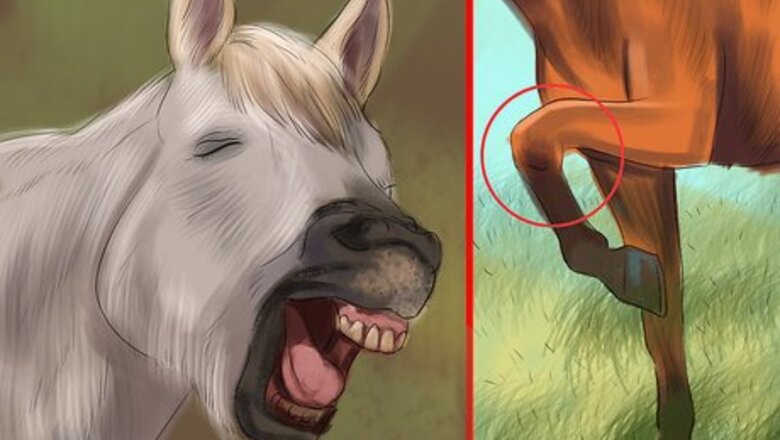
views
X
Research source
is a firm yet fair way to train your horse and develop a deep and meaningful relationship with him. Bonding with your horse using natural horsemanship involves an in-depth understanding of a horse’s natural instincts and body language. If you wish to train and bond with your horse in a way that gains his trust and respect, natural horsemanship is definitely the way to go!
Understanding Your Horse’s Body Language
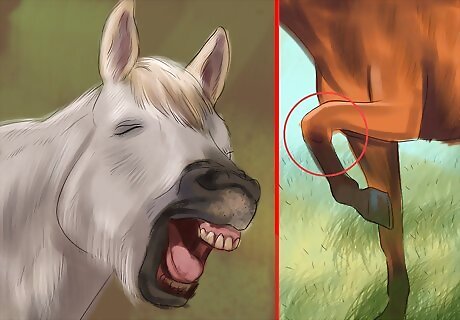
Observe how your horse uses his body and voice to communicate. Your horse is able to use many parts of his body (eg, legs, face, tail) and make many different types of voices to communicate with you and other horses. Understanding his body language is a key component of natural horsemanship; if you know why they move and use their body in certain ways, you will improve your communication and bond with your horse. It can be helpful to initially watch your horse without interacting with him to get a better idea of what he’s trying to say.
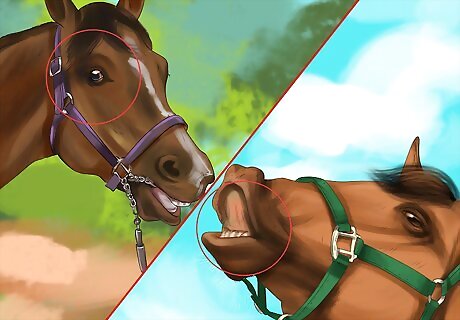
Watch how your horse uses his eyes, ears, and facial expressions to communicate. Your horse’s eyes, ears, and face often work together to convey how your horse is feeling. For example, if your horse is feeling frightened, his ears will be pricked forwards and his eyes will widen. The way that your horse has his eyes open or closed often indicates his alertness and wakefulness; he is alert and attentive when both of his eyes are open, but is drowsy if his eyes are only half open. If he is keeping one eye shut or seems unable to open one eye, there may be something medically wrong with that eye; consult your veterinarian in this case. Horses are able to move their ears together and individually in response to their environment. For example, if one ear is positioned backward, your horse is probably trying to listen to something behind him. If his ears are flattened back or pricked forward, your horse is likely frightened or upset; flared nostrils and widened eyes often accompany these ear positions. Move back to a safe distance from your horse if his ears indicate that he is frightened or upset. A horse’s facial expressions can convey different emotions or responses. The flehmen response (your horse may look like he’s laughing when he does this) is a way for your horse to pick up and process different scents in his environment; he will lift his head and curl his upper lip under itself. If your horse is young, he may softly clack his teeth (softly chomp his teeth together) so that other older horses won’t hurt him. To indicate that he is relaxed, your horse may droop his chin or mouth.
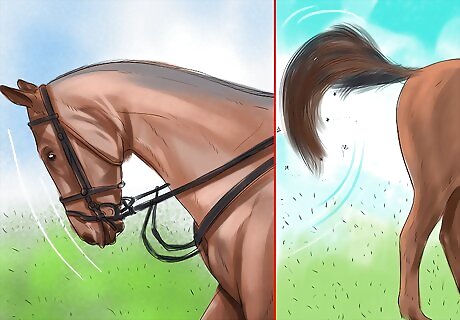
Look at the way your horse uses his head, neck, and tail. Your horse can convey a variety of emotions by the way he positions his head, neck, and tail. Paying close attention to these positions will give you important clues as to how he’s feeling. If your horse is holding his head high, he is feeling alert and curious. A lowered head could mean that he is submitting to a command, but it could also mean that he is depressed. Stiff neck muscles indicate that your horse is feeling tense or stressed. If your horse’s neck is stretched out and his neck muscles are feeling loose, he’s probably feeling relaxed. When your horse swishes his tail, he could be swatting pests away (slow and steady swish) or could be feeling agitated (quick and aggressive swish). If his tail indicates that he’s agitated, give your horse some space to calm down. The height at which your horse holds his tail indicates that he’s feeling alert (high tail) or has some discomfort (tail tucked between the legs).
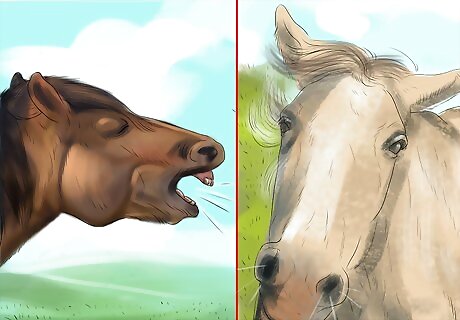
Listen closely to the voices that your horse makes. Just like his other body parts, your horse will use his voice differently in different situations. Take time to learn what each of these voices means. Horses will neigh when they’re feeling anxious (high-pitched), confident (sounds like a bugle), or simply acknowledging their presence. Horses will also snort and nicker. Snorting indicates that your horse is either excited or alarmed about something. Nickering is a calmer noise that your horse will make when he’s anticipating meal time or, in the case of a female horse, communicating with her foal. Groans commonly mean that your horse is experiencing some type of discomfort, such as being ridden too hard or landing too hard. Groans can also indicate a serious medical condition, such as constipation or stomach pain; your veterinarian will be needed to diagnose and treat the medical condition. Horses can also sigh and squeal. Just like in people, your horse will sigh when he’s feeling relaxed or relieved. In contrast, your horse will squeal when he is feeling playful or meeting another horse for the first time.
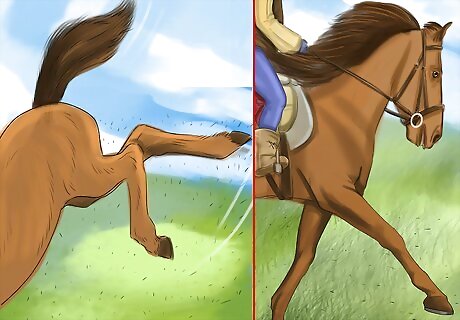
Watch your horse’s posture and legs. Taking an overall look at how your horse is standing or moving can give you important clues as to what he’s trying to communicate. Use caution when observing how your horse uses his legs; horses are very powerful animals and can cause serious physical injury when they kick. If you notice that your horse is walking very stiffly and has tense-looking muscles, he is likely in some type of pain. Your veterinarian can perform medical tests, such as a lameness exam, to diagnose the pain. If your horse is trembling, he’s saying that he’s afraid of something. If his trembling is severe, a veterinary behaviorist can work with your horse to calm his fears. To express playfulness, a horse will buck (lifting his back legs) or rear (raising the front legs). Keep in mind that both of these leg movements can also indicate aggression or fearfulness. If your horse’s legs are splayed, he may getting ready to bolt or may have medical issues that prevent him from standing properly. Your veterinarian can perform medical and behavioral tests to determine the cause of the splayed legs. Your horse will paw or stamp the ground with his front legs to indicate that he is feeling impatient or frustrated. Watch out if your horse lifts one of his front or back legs or starts swinging his hindquarters. This means that he’s getting ready to kick. Move as far back from your horse as possible to prevent injury.
Applying Pressure to Your Horse
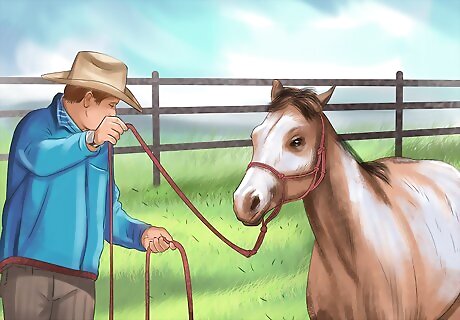
Understand the purpose of applying pressure to your horse. The use of pressure is a way to train your horse. Using pressure, which can be direct (touching your horse with your hands) or indirect (using a lead rope), can help your horse understand what you want him to do with his body. When done with care and consistency, your horse will learn how to quickly and calmly respond to your pressure, which will strengthen your bond with him.
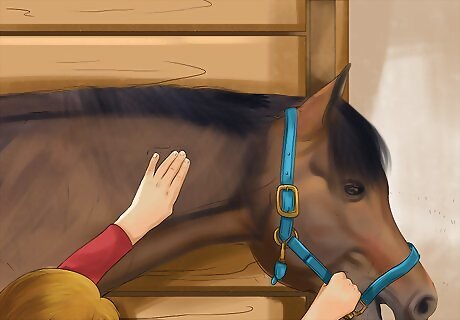
Apply direct pressure to your horse. By using direct pressure, you are teaching your horse to move his body according to how you touch him. Training with direct pressure can be very time-intensive, so just be patient with your horse as you train him in this way. Start by applying gentle pressure to his poll (between the ears) to get him to lower his head. It may take your horse a few minutes to understand what you want him to do, so just keep applying steady pressure until he moves, or at least starts to move, his head down. Once he gets more comfortable with the direct pressure to his poll, you can apply pressure to different parts of his body, such as his nose (your horse will move backwards) and behind the ears (your horse will move forwards). Practice applying direct pressure each day until your horse quickly, consistently, and appropriately responds to your touch.
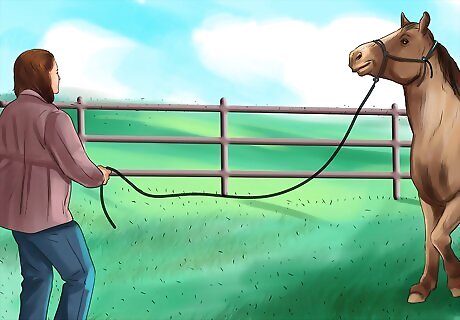
Release the pressure. It is important to remember that it’s the release of the pressure that teaches the horse that he’s doing the right thing, rather than the application of pressure itself. Knowing exactly when to release the pressure will help your horse learn your commands more quickly. Release as soon as your horse starts to respond in the way that you want him to; waiting a few seconds after he responds is too late. The release can be full (no more pressure at all) or partial (less than the initial pressure). Releasing the pressure before he has tried to respond will increase the amount of time it takes him to learn to respond to pressure.
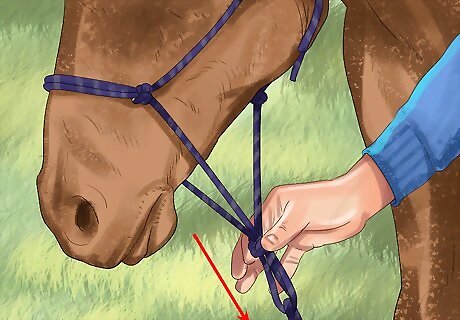
Apply indirect pressure to your horse. Using indirect pressure means that you are not directly touching your horse; rather, you are using a driving aid, such as a lead rope, to give him commands. Practice this type of pressure after your horse has mastered responding to direct pressure. Attach the lead rope to your horse’s halter. While standing about three feet in front of him, start to slowly wiggle the lead rope to get him to step backwards. If he doesn’t move backwards, or moves in another direction, wiggle the rope with increasing force until he takes a step or two back. Try wiggling from even further back (about 10 feet). Practice applying indirect pressure for a few minutes each day. As with direct pressure, release the indirect pressure as soon as your horse to starts to respond appropriately. In this case, you would stop wiggling the rope to release pressure.
Ground Training Your Horse
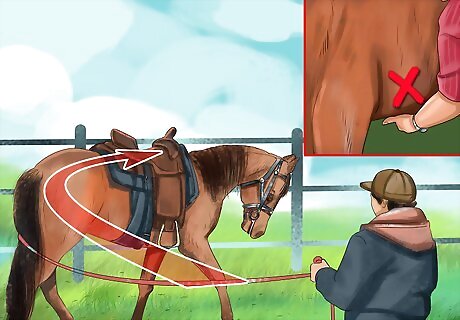
Groom your horse each day. Grooming is a component of ground training, a type of training where you are standing on the ground while taking your horse through various exercises. Ground training is an important of natural horsemanship, since it allows you to bond with your horse by establishing boundaries and communicating with him using his natural body language. If you haven’t groomed him before, start by touching him all over with just your hands. Doing this everyday will get him used to your touch. Be mindful of the areas where he doesn’t feel comfortable being touched, such as his stomach and eyes. When you start grooming him, focus on the areas where he likes to be touched. Many horses enjoy being touched around their withers and mane. By grooming and touching your horse all over for just a few minutes each day, he will trust that you will touch him with gentleness and respect. When he trusts you in this way, you will know that you have established a strong bond with him.
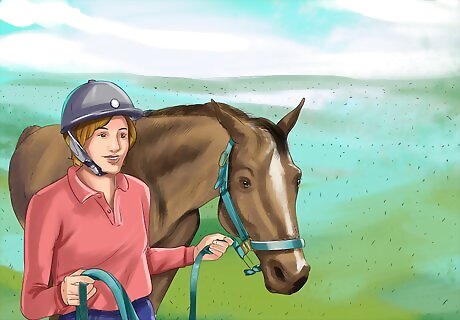
Practice various leading exercises with your horse. With the use of a lead rope attached to your horse’s halter, lead him from various positions, including in front of him, beside him, and behind him. Leading exercises will teach your horse to respect your personal space; earning this respect from your horse is another important aspect of bonding with him through natural horsemanship. Lead your horse by walking in front of him. Determine how far in front of him you want to walk, and keep that distance for the duration of your walk. If your horse tries to close the distance that you established, gently push him back. He will learn to respect that distance. Lead from the partner position (beside him). Stand next to his shoulder for this position. Just like when you walk in front of him, establish and maintain your area of personal space when walking beside him. Practice this position next to both shoulders. Lead from the drive position. Stand behind your horse’s drive line (behind the withers) and walk diagonally behind him. As an alternative, try leading your horse without the lead rope. Practice this when your horse has mastered being led with the lead rope. No matter which lead position you practice, the goal is for your horse to see you as alpha and respect your personal space. Practice each day until your horse is comfortable being led by you.
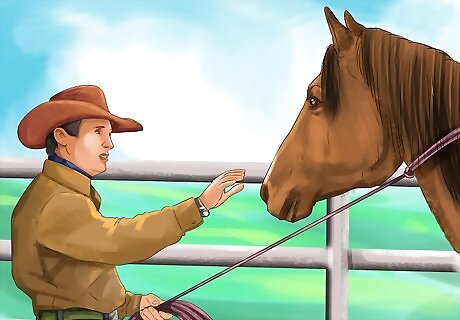
Practice ground training with your horse every day. The key to ground training is to practice it consistently until your horse responds quickly and appropriately to your commands. When he does this, you will have established a bond with him based on mutual trust and respect. Do not do ground training for more than 30 minutes otherwise he will get bored and will not respond.














Comments
0 comment